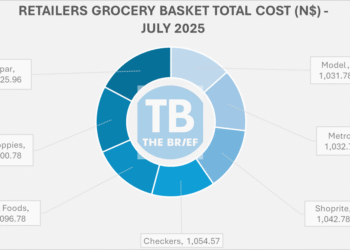
The rand is trading on the wrong side of R18/$ for the first time in more than three months, as expectations grow that US interest rates may still climb much higher.
On Monday morning, the currency declined to R18.06/US$, after trading around R17.50 just a week ago. It started the year below R16.70.
Strong US employment data, released last week, fuelled fears that the US Fed may move to cool inflation with even higher rates.
AFP reported that the employment reading led a number of Federal Reserve officials to insist that there was still plenty of work to do before they were happy they had prices under control.
“These comments were particularly noteworthy given that they explicitly pushed back against the narrative of rate cuts by year end, which markets had started to assume would be coming fairly soon,” said Michael Hewson at CMC Markets.
Markets are now nervously awaiting the US inflation data for January, which will be released on Tuesday.
“An upside surprise can move through risk assets like a wrecking ball after a slowdown in recent inflation readings has sparked a fresh bout of optimism among investors for a potential ‘soft landing’,” SPI Asset Management’s Stephen Innes said.
Some economists are now predicting that rates could move to six percent from the current 4.50% to 4.75%, AFP reported.
As the local economy falters, in part to record levels of load shedding, the SA Reserve Bank has much less scope to hike rates further.
This is negative for the rand. If South Africa’s interest rates are not raised in step with the US, the rand and local assets like bonds will lose their appeal to foreign investors, who are on the hunt for good returns. Foreign inflows are crucial to keep the rand stable.
Investec economist Annabel Bishop says the recent increased appetite of the ANC for coalitions with the EFF at the municipal level has also negatively affected investor sentiment towards South Africa.
“Businesses fear increased left-wing policies… The ANC’s current preferred coalition party is now the EFF, likely to push for some ANC adoption of its policies.”
In addition, she adds that the business sentiment has been depressed by load shedding, as well as the deterioration of rail and port transport capacity, along with security of water supply.
On Friday, credit rating Moody’s warned that “South Africa’s longest-ever stretch of power cuts is credit negative”. Moody’s currently has a stable outlook on SA, with a Ba2 rating, a notch higher than the Fitch and S&P equivalents, Bishop notes.
According to Peter Worthington, senior economist at Absa CIB, it seems likely that South Africa’s growth, current account, budget balance and real policy rates could slip relative to other emerging economies in 2023. “Therefore, South Africa may struggle to attract capital inflows, especially amid persisting load shedding and other infrastructural constraints.”-fin24
Â











